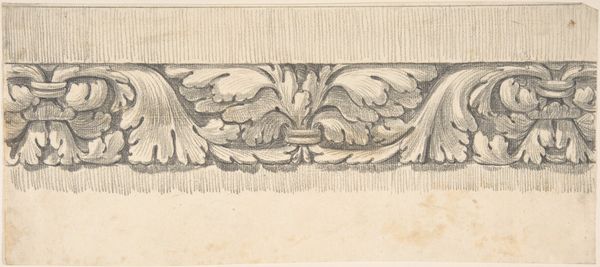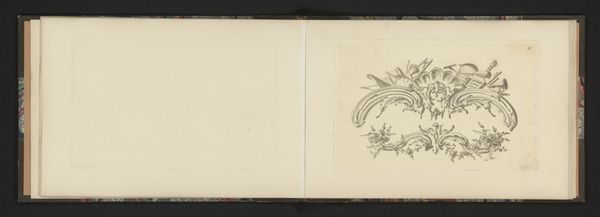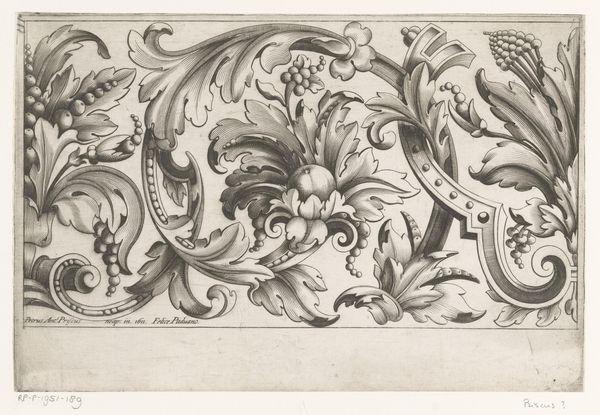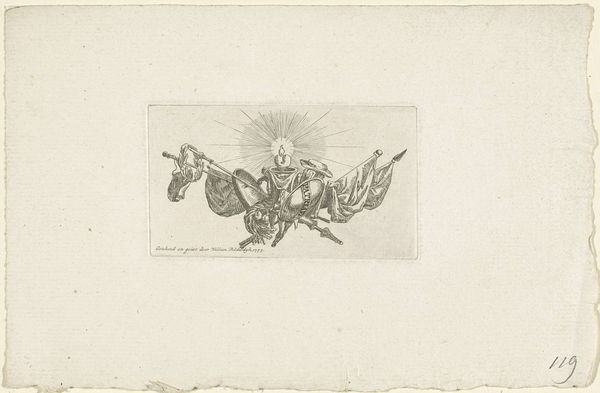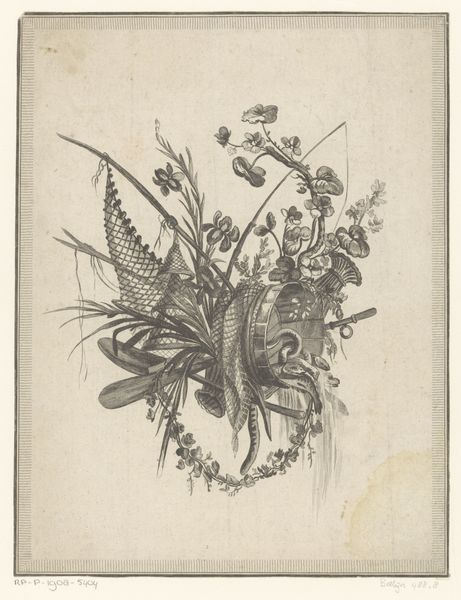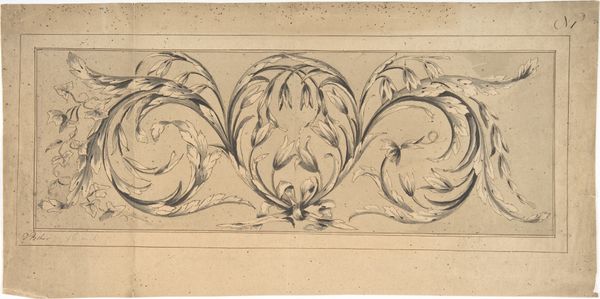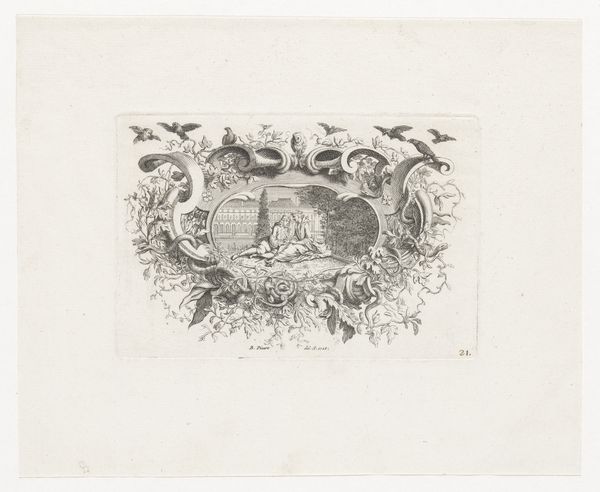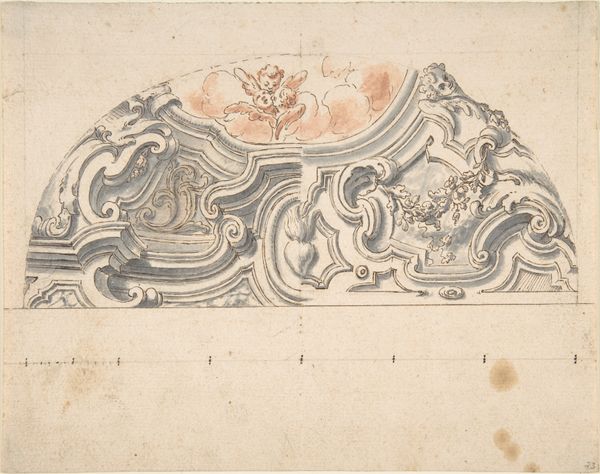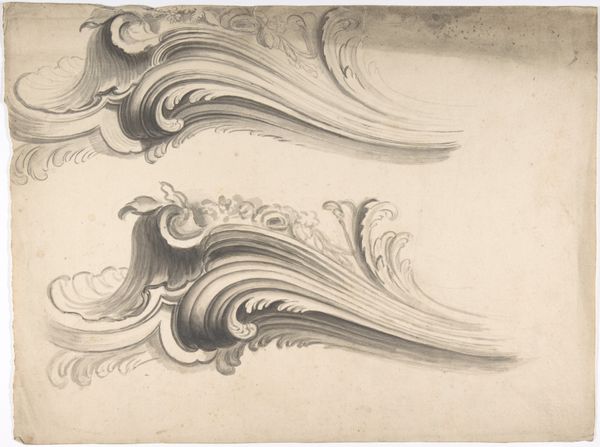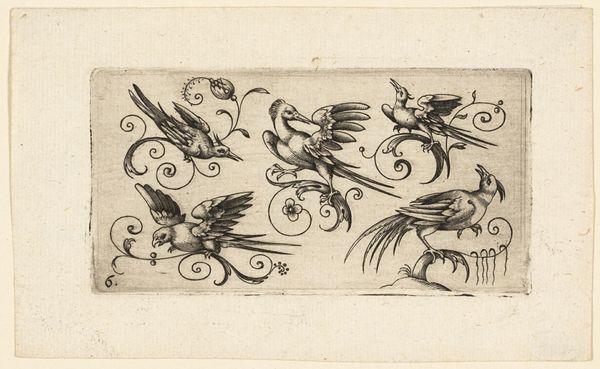
drawing, ornament, print, pencil
#
drawing
#
ornament
# print
#
pencil sketch
#
flower
#
pencil
#
line
Dimensions: sheet: 8 3/8 x 5 5/16 in. (21.3 x 13.5 cm)
Copyright: Public Domain
Curator: Today, we’re examining “Acanthus Leaf and Flowering Vine Ornament,” a drawing created anonymously sometime between 1800 and 1900, housed here at the Metropolitan Museum. Editor: The stark monochrome immediately brings a sense of age and quiet formality to mind. It’s meticulously rendered, but in its muted tones, it almost feels like a forgotten blueprint of bygone aesthetics. Curator: The work, composed with pencil on paper, primarily functions as a study of ornamentation, typical of the Neoclassical era's fascination with classical motifs, specifically, the acanthus leaf and a stylized flowering vine. Observe the rhythmic repetition of the leaf structure, capped by the floral spray. Editor: Given its clear intention for ornamental use, it's difficult not to contextualize this within the broader narrative of architectural power dynamics. These designs, while beautiful, were invariably destined to adorn spaces of privilege and authority. Who was commissioning such drawings, and whose stories are silenced in these very walls decorated by such ornamental work? Curator: Certainly, that is worth considering. However, from a strictly formal viewpoint, consider how the artist employs line and shadow to evoke three-dimensionality, essentially using very subtle gradations of value. Notice how the line weight varies, enhancing depth. The execution exhibits precision. Editor: The visual language employed, particularly the emphasis on neoclassical aesthetics, promoted the exclusive, ruling class. The fact that it is labeled anonymous emphasizes how this vision and not the actual individual artist, has prominence. This design reinforces certain hegemonies and warrants inquiry. Curator: Indeed. This exercise also emphasizes the interplay of the classical tradition and contemporary decorative trends. Before we leave this work, is there anything else you’d want our visitors to know? Editor: This image serves as a window into the ways that we, as individuals and communities, define ourselves in spaces of privilege through aesthetics. Curator: I trust our visitors have come to a nuanced understanding of this decorative object, the skill used to create it, and its legacy.
Comments
No comments
Be the first to comment and join the conversation on the ultimate creative platform.
